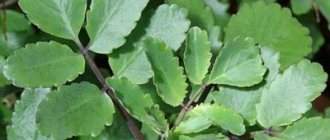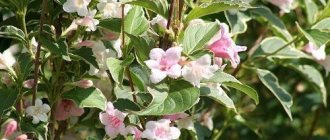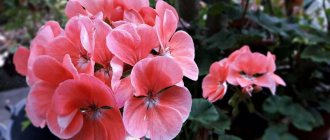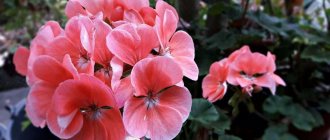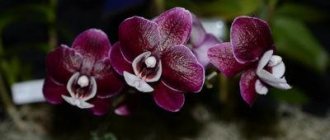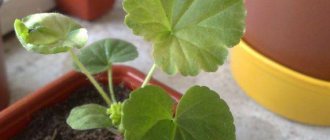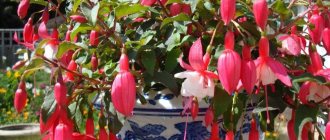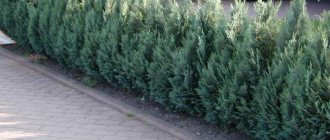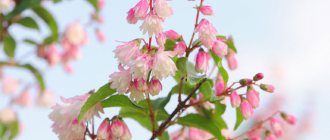Hazel (lat. Córylus) is a shrub of the birch family with gray bark on the branches. The bush has large leaves, shaped like a fish.
Hazel or hazel is a plant from the Birch family. Most species are cultivated. The fruit is the well-known and beloved hazelnut.
HALTENUT ON YOUR LAND? EASILY! All about growing hazelnuts
This leads to a logical question: is hazel a tree or shrub , the answer to which is given in our article.
A little history
Archaeologists claim that the plant was known to mankind long before the advent of fire. For example, hazelnuts appeared in the Caucasus more than 6,000 years ago.
As now, in those distant years, hazel nuts were used both as a tasty delicacy and to quickly satisfy hunger. Moreover, nuts do not require very difficult storage conditions.
In Russia, cultivated hazel appeared thanks to the efforts of I.V. Michurin; it grew wild and continues to grow in ordinary forests, enjoying the constant popularity of local residents.
But even today it is almost impossible to find hazelnuts in ordinary summer cottages, and there is no mention of growing nuts on an industrial scale.
Where does Hazel grow?
The geography of distribution of the shrub is quite extensive. Asia Minor is considered its homeland, but hazel is found in coniferous-deciduous forests not only in Eurasia. It even grows in America. The plant is popular and cultivated in many countries.
Hazel does not tolerate heat well. Found naturally in temperate climates. This is also true for garden species. They will not die, but the ideal temperature for dusting (+12 degrees) will not be achieved, and, therefore, there will be no fruits
Useful properties of hazel
Hazelnut fruits contain a huge amount of vitamins and minerals vital for the human body. Nuts quickly satisfy your hunger, so they can be a healthy snack during the day. They are used in cooking, pharmaceuticals, and cosmetology.
Walnut wood is considered a fairly valuable material for the production of furniture and tools, although most often small trees are used to produce garden tools, and flexible branches are used to create wickerwork or openwork decorative items.
The plant itself will be a pleasant decoration for any summer cottage. It:
- Perfectly protects the area from dust and gases from the street;
- It pleases with rich green foliage, and in the fall it turns into a bright yellow spot, elegantly standing out among the dull grayness.
Hazel often strengthens the slopes of ravines, and it itself miraculously fills areas of felling and fires, hiding all traces of destructive human activity in just a few years.
Hazel blossom
A blooming hazelnut is a sign of proper growth. A monoecious plant is pollinated by wind. Male inflorescences are catkins, and female inflorescences are kidney-shaped from a pistil with a pericarp and slightly protruding stigmas. They catch pollen.
Hazel trees bloom from April, but it all depends on weather conditions. A stable temperature of up to +12 degrees for several days is considered the most favorable. The fruits begin to set when the first leaves appear.
Description of hazel
Hazel belongs to the Birch family. In Russia, it does well in the North Caucasus and Central Russia.
Most often it grows as a shrub, reaching a height of 1.5-2 meters, sometimes, mainly after human intervention, it becomes a tree, capable of growing up to 7-10 meters.
- Flowers appear in late March-early April even before the first leaves appear.
- The fruiting period for a wild tree begins in 6-8 years; cultivated plants can produce a harvest already in the fifth year of life.
- From one hazel you can collect up to 10 kilograms of nuts, although such abundance will not be available every year.
- After abundant fruiting, hazel can rest for several years.
The fruits grow in 3-4 pieces, each nut weighs about 5 grams.
The plant has a powerful root system, but all the roots are located close to the surface, so the hazel itself will not be able to obtain adequate food for itself without the help of its owners.
Pests and diseases of hazel with photos
Hazel pests
Hazel can be harmed by insects such as leaf beetles, aphids, nut weevils, longhorned beetles, and also bud mites.
Kidney mite
The kidney mite is a small insect, reaching 0.3 millimeters in length. For the winter it hides in hazel buds, and in the spring it lays eggs in them. Those buds where the mite lives can be easily distinguished from healthy ones. So, they swell greatly and become similar in size to a large pea. Then, when healthy buds open, those that have become a “house” for pests dry out and fall off.
Aphid
Aphids are very small sucking insects that suck cellular sap from trees. It should also be remembered that this pest is the main carrier of viral diseases. It is quite difficult to notice aphids on hazel, which is where the main danger lies. Because of this pest, the foliage becomes twisted, the buds and stems are deformed, they begin to develop relatively slowly, and the fruits do not fully ripen.
Nut weevil
The nut weevil is a brown beetle that reaches 10 mm in length. The caterpillar of such a pest has a milky yellow body and a brown-red head. Its female lays her eggs in unripe fruits, and her larvae eat the pulp of the nut. If the tree is very badly affected, it is possible that up to half of all fruits will be spoiled.
Walnut (hazelnut) barbel
The hazelnut (walnut) longhorned beetle is an extremely dangerous harmful insect, which is a black bug, reaching 1.5 cm in length, with yellow legs. The larvae gnaw out the core of the stems, after which they begin to dry out, while the upper leaf blades turn yellow and curl.
Walnut leaf beetle
The walnut leaf beetle is a beetle reaching 0.6–0.7 cm in length; its elytra are purple in color. This leaf-eating pest is the most dangerous. The larvae of this insect are painted dark green, so they are almost impossible to see against the background of foliage, on which they live and develop for quite a long time. This insect harms alder, hazel and willow.
hazelnut / PROBLEMS / solve…
Hazel diseases
Hazel has a relatively high resistance to disease, and it only suffers from branch rot, rust and powdery mildew.
Powdery mildew
Powdery mildew is a fairly common disease that any gardener is familiar with. The affected plant develops a whitish coating on the surface of the stems and foliage; after some time it thickens and changes its color to brown. Infected parts of the plant stop growing, they become dark and die. Ovaries do not form on the inflorescences, and the frost resistance of the tree is greatly reduced.
Rust
Rust is a fungal disease. In the affected plant, dark red tubercles appear on the front surface of the foliage, while oval or round pustules form on the back surface. Over time, the spots become stripes, and the leaves turn yellow and fly away.
White rot
White rot can affect a plant in various ways, namely: as peripheral rot or as mixed rot of branches. In both the first and second cases, severe damage can be caused to the plant, which in some cases causes it to die.
Hazel processing
If you find pests on the bush, it is recommended to cover the soil under it with polyethylene, after which the plant should be shaken until all the insects fall from it onto the film. When there are a lot of pests on the bush, it should be sprayed with a solution of an insecticidal preparation, and it should be remembered that sucking insects are gotten rid of with the help of an acaricide. The best results are shown by such products as: Actellik, Karbofos, Chlorophos and others of similar action.
If hazel is severely affected by a fungal disease, it must be treated with fungicidal preparations, for example: copper sulfate, Bordeaux mixture and others made on the basis of copper. In order to prevent fungal diseases, it is recommended to follow the agrotechnical rules of this crop and also properly care for the plant.
Selecting a location
Hazel is not particularly demanding for cultivation, but the choice of planting site must be approached as responsibly as possible.
- The ideal area would be a place on the south or west side, where there is a lot of light and there are no drafts or strong winds.
- Groundwater should lie below 1.5 meters from the surface, but lowlands in which water accumulates during floods or heavy rains will also not please the plant.
- So does heavy soil. The ideal soil is loose, fertile soil with neutral or slightly increased acidity.
There should be at least 4-5 meters to the nearest trees.
Growing hazel in the garden
Is sea buckthorn a tree or a shrub? Growing sea buckthorn at home
Hazel is a shrub that begins to bear fruit 7-8 years after planting. Therefore, if you really want to get a harvest much earlier, you can try to replant plants that grew naturally in the forest.
To do this, remove damaged roots from dug-out plants, dip them in a clay (or with the addition of mullein) mash and plant them at a distance of about 3 m from each other in prepared soil. In this case, the root collar should not be buried in the soil; it is better if it is located at a distance of 3-4 cm above the soil surface. After planting, the bushes are thoroughly watered and mulched using fine manure.
If a seedling is planted, it should be without leaves, with 3-4 powerful stems and living branched roots (immediately before planting, they are cut to 0.25-0.3 m).
Hazel is a self-pollinating plant, since it contains both female and male flowers.
Pit preparation
The planting pit is prepared approximately a month before the expected date of planting of the new inhabitant of the site. When planting hazelnuts in the spring, it is advisable to prepare the hole in the fall.
- If there is light and fertile soil, a depth of 50 centimeters will be sufficient; if the soil does not have high nutritional properties, the depth is increased to 80 centimeters.
- Fertile soil is poured into the hole; rotted manure, ash or superphosphate can also be added there. It is advisable to put a few handfuls of earth pulled out from under wild hazel on top. It contains beneficial fungi that help the seedling to take root faster in a new place.
The plant is placed on a small mound inside the hole and carefully covered with fertile soil. The soil is compacted, the tree is tied to a strong stake, and the planting site is watered abundantly.
One plant will require at least 40 liters of water. When the moisture leaves, the tree trunk circle is covered with mulch, which will help retain moisture for a long time.
For better pollination, it is recommended to plant several hazels in one area at once. And it is advisable to use different varieties for planting.
Features of the view
Hazel is a shrub or tree that belongs to monoecious plants, but with separate formation of male and female flowers on the same crop. Male earring flowers are collected in soft yellowish inflorescences, similar to birch or alder catkins. Laid in June-July, they are already clearly visible in the fall and bloom in early spring, as soon as the plant overwinters. The wind picks up and carries pollen.
The female inflorescences are practically invisible. Consisting of small flowers tightly pressed together, they are located inside special buds, also formed in the previous season. During the flowering period, the leaf scales covering the inflorescences move apart, allowing the pollen carried by the wind to be caught in a bunch of bright red stigmas.
Pleasant neighborhood
In order for the plant to grow better, it is recommended to plant lupine, oats, vetch, and mustard in the tree trunk circle.
These plants, when mowed, will become an excellent mulch layer, helping to make the soil more loose and provide the hazel with useful substances.
Lombard nut (large hazel)
Monumentally tall hazel, a shrub with magnificent straight branches of gray color, growing up to 10 meters in height. The leaves are round and jagged at the edges. Lombardy nut is a heat-loving crop and has low winter hardiness.
Cultivated since ancient times as a nut-bearing shrub, large hazel is common in the Balkans and Asia Minor.
The bush produces dense, pubescent annual shoots. The leaves of this culture are broadly oval, almost round, up to 10-12 cm in diameter, heart-shaped at the base, ending with a short and sharp apex. Large men's earrings, reaching ten centimeters, are an excellent decoration. The fruits form crowded rosettes, in which there can be up to 8 pieces, protected by a fluffy tubular wrapper.
The Lombard nut is the ancestor of cultivated hazelnut varieties of industrial importance. It develops excellently on fertilized, fertile, breathable soils and is often used in landscaping as an ornamental shrub.
Hazel tree care
Hazel is not too demanding in terms of care. For the first time after planting, it is recommended to shade the seedling from too active sun. In the future, the sun's rays will only please the plant.
But the plant will feel great in a little shade.
- Watering. It is recommended to water hazel once a month, but these recommendations do not take into account weather conditions, so in hot periods the frequency of water application is increased, and in rainy summers it is reduced. At least 40-60 liters of water are poured under an adult plant at a time; for young seedlings this figure can be halved.
- Feeding. The plant is usually fed three times per season: in the spring, adding nitroammophoska, in June, using wood ash, in July, again using nitroammophoska. Once every three years, humus or rotted manure is added under the plant.
- Loosening and weeding. Both operations are performed as needed. Additional loosening is recommended about a day after watering or rain.
- Trimming. The shoots are trimmed constantly as they appear. In the spring, sanitary pruning is carried out, removing broken, damaged, dried, diseased branches, as well as branches growing inside the crown. Adult plants that have reached the age of 20 years already need rejuvenating procedures. In this case, one branch whose age exceeds seven years is pruned annually. For adult hazels that already refuse to bear fruit, you can cut off almost all the branches, leaving a few shoots with 2-3 strong buds. To form a tree, only one most powerful shoot is left.
- Wintering. Young plants (up to three years old) require covering with special materials; the flexible branches of the bush can simply be bent to the ground and covered with spruce paws. In this case, thin branches will be protected not only from the cold, but also from the wind, and therefore will not break and will more easily survive a difficult period. Mature plants can cope well with the cold on their own.
Types and varieties of hazel with photos and names
It was already mentioned above that there are approximately 20 types of hazel. At the same time, cultivated species have a large number of varieties, varieties and hybrids. Below we will describe those that are most popular among gardeners.
Common hazel (lat. Corylus avellana)
The height of this multi-stemmed shrub is 4–6 m. The crown is spreading and wide, reaching 4 meters in diameter. There is pubescence on the surface of the stems. round leaf plates reach 9 centimeters in width and 12 centimeters in length. This plant blooms before the leaves open. The spherical nuts, up to 15 mm in diameter, are covered with a brownish peel. Their ripening is observed in September. This species can be found both in natural conditions and in culture.
Tree hazel (lat. Corylus colurna), or bear nut
The fruits of this decorative species are very tasty. It is considered the only one of all species that is represented by trees. Its height is about 8 m, but in regions with a warm climate such a tree can grow up to 20 m. The lifespan of this plant is approximately 200 years. Broadly ovate leaf plates are placed on petioles reaching a length of 50 mm. The fruits of this plant are larger in size compared to other species, but their kernels are smaller, but much tastier compared to hazelnut kernels.
Manchurian hazel (lat. Corylus mandshurica)
The height of such a multi-stemmed, highly branching shrub is about 5 meters. The bark is fissured, dark gray in color. A characteristic feature of this species is the fruits and foliage of an oblong shape. The fruits have a prickly coating, making them relatively difficult to peel. This species is found naturally in the Far East and China.
Variegated hazel (lat. Corylus heterophylla)
The height of the bush is about 300 cm. Its top is truncated, and the foliage is bilobed. In spring, catkins of male inflorescences grow on it, and inconspicuous buds of female flowers, painted red, are also formed. The formation of fruits is observed in a leaf wrapper of 2 or 3 pieces. In nature, this shrub can be found in China, the Far East, Japan and Korea. The species is distinguished by its unpretentiousness to climatic conditions, and it grows well in mid-latitudes.
Red-leaved hazel (Corylus atropurpurea)
The height of this ornamental shrub varies from 4 to 6 meters. The crown is very dense. The leaves have a dark purple color, which changes to green closer to autumn. The buds and earrings are dark burgundy. Thanks to this species, a large number of hybrids have appeared, as well as varieties that are very popular among gardeners.
Large hazel (lat. Corylus maxima), or Lombard nut
The height of the bush is about 10 meters. The nuts are placed in a tubular wrapper, and it is a couple of times larger than the fruits themselves. The fleshy kernels have an elongated shape. Under natural conditions, such hazel grows in Italy, Turkey and Asian countries.
There are also such species as: Chinese, American, Colchian, horned, Himalayan, or fearsome hazel, Siebold, etc.
In mid-latitudes the following varieties of hazel are most popular:
- Isaevsky . This variety is one of the most valuable. It has good winter hardiness and large fruits with high taste.
- Masha . This is a hybrid of red-leaved hazel. It is characterized by frost resistance and productivity. The medium-sized elongated nuts are very tasty; they are covered with a thin shell.
- Roman . This mid-season Italian variety is resistant to pests and diseases. Very beautiful large flat-round fruits have a wonderful taste.
Even in the middle latitudes, varieties such as Ekaterina, Moscow Rubin, Pamyat Yablokova, Pervenets, Pushkinsky Red, Ivanteevsky Red, Kudraif, Moscow Early, Purpurny, Sakharisty, Sakharny, a series of varieties Severny, Tambovsky Early, Tambovsky Late, Lentina, are popular. Alida, Lena, etc.
And in Ukraine and in the southern regions of Russia, varieties such as Panakhessky, Altai, Cherkessky, Kuban, Perestroika, Futkurami, etc. are popular.
HAZELNUT VARIETIES
Hazel tree propagation
There are several ways to breed hazelnuts. The easiest way is to buy a ready-made seedling from a reliable company, but for those who want to experience the whole process, you can use:
- By layering;
- Cuttings;
- Dividing the bush;
- Seeds.
But the last option is considered the most unreliable and difficult.
Cute hazel will be a wonderful decoration for the site and a source of tasty and healthy fruits that will certainly appeal to all household members.
Hazel: is it a shrub or a tree?
Hazel unites the genus of shrubs, but among more than 20 species of its representatives there are also trees. For example, the bear nut, which will be discussed further, is a magnificent specimen of a tree, slender and tall, with a beautiful crown shape. But most hazel species are still shrubs, the wild forms of which form dense undergrowth in deciduous forests. The most widespread and of high economic importance is hazel, or common hazel. The history of the origin of the word “hazel” is interesting. This original Russian name comes from the noted similarity of the outlines of the leaves of the bush with the body shape of the lake fish bream, known since ancient times as the breadwinner of the Russians.
